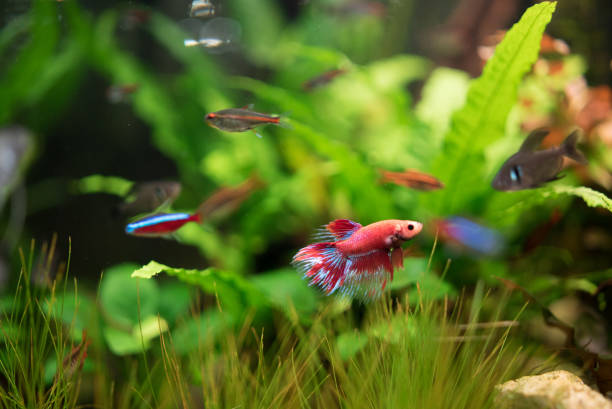The interesting and colorful aquatic pets known as betta fish, or Siamese fighting fish, have won the hearts of fishkeeping lovers all around the world. These fish are fascinating to observe and take care of because of their vibrant colors and flowing fins. The choice of the appropriate tank size is one of the most important choices you’ll have to make if you’re thinking about getting a betta fish into your house. The best size tank for 1 betta fish will be discussed in this article taking into account the fish’s natural habitat, behavioral characteristics, and general health.
Understanding the Natural Habitat of Betta Fish
Betta fish live in small ponds, slow-moving streams, and shallow rice fields in their natural habitat in Southeast Asia. The demands and behavior of bettas kept in captivity are influenced by the fact that these aquatic bodies frequently have limited space and are geographically isolated.
Betta fish have developed into lonely beings who prefer to dwell by themselves in their abodes. Due to their territorial instincts, keeping multiple bettas in the same tank is generally not advised unless you’re an experienced fishkeeper willing to divide the tank into separate territories. They can become aggressive towards other fish, especially males, which has earned them the nickname “fighting fish.”
The Ideal Size Tank for One Betta Fish
The minimum suggested tank size for one betta fish is 5 gallons (19 liters). Although bettas are occasionally kept in smaller containers like bowls or vases, these arrangements are frequently insufficient for their welfare and long-term health. Larger tanks have a number of benefits that greatly extend your betta’s life, including :
- Swimming Space: Your betta has plenty of room to swim around, explore, and exercise in a 5-gallon tank. Due to the lack of space in smaller pots, bettas may become lazy and anxious.
- Water stability is achieved by maintaining steady water parameters in a larger tank. This lessens the effects of unexpected fluctuations and makes it simpler to keep the water clean and safe for your betta.
- Betta fish are tropical creatures that thrive in a consistently warm climate. Larger tanks provide a more stable and comfortable environment for your fish because they are more resistant to temperature changes.
- A 5-gallon tank can hold a modest air pump and filter to provide optimum water aeration and circulation. To eliminate contaminants and preserve water quality, filtration is necessary.
- Options for Aquascaping: A larger tank gives you more latitude when it comes to aquascaping. You can give your betta a lovely and enriching habitat by including real plants, ornaments, and hiding places.
Providing a Stimulating Environment
It’s critical to give your betta a fascinating and enriching habitat in addition to selecting the appropriate tank size. Here are some suggestions to improve the habitat of your betta:
Betta fish are tropical and need water that is consistently between 78°F and 82°F (25.5°C and 27.5°C) in their aquariums. To maintain the proper temperature range, make an investment in a dependable aquarium heater.
Bettas are weak swimmers, so pick a mild filter that won’t produce powerful currents. Good options are sponge filters or low-flow hang-on-back filters.
- Decor: To provide hiding places and resting areas for your betta, add live or silk plants, caves, and driftwood. These improvements lessen stress by simulating their natural surroundings.
- Water Changes: To remove contaminants that have accumulated and to maintain the quality of the water, do regular partial water changes (approximately 20–30% weekly).
- A nutritious diet should include high-quality betta pellets, frozen or live foods, as well as occasional treats for your betta.
Conclusion
In order to give your betta fish a comfortable and healthy environment, choosing the appropriate tank size is essential. The minimum suggested tank size for one betta is five gallons, which provides plenty of swimming space, stable water conditions, and the chance to create an interesting and enriching environment. You can spend many years with this lovely and charismatic fish by attending to its needs and giving it the care it needs.

